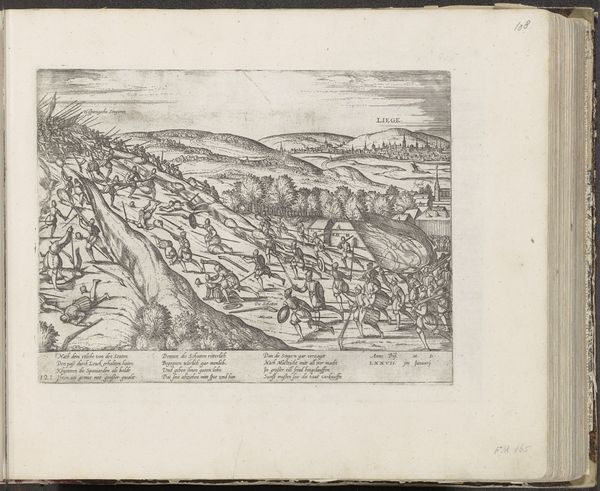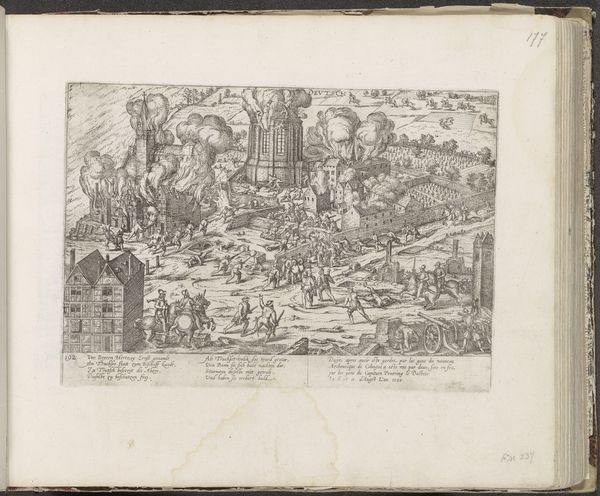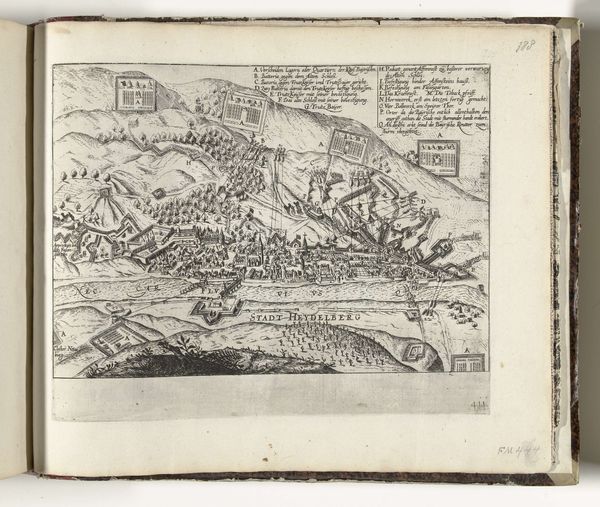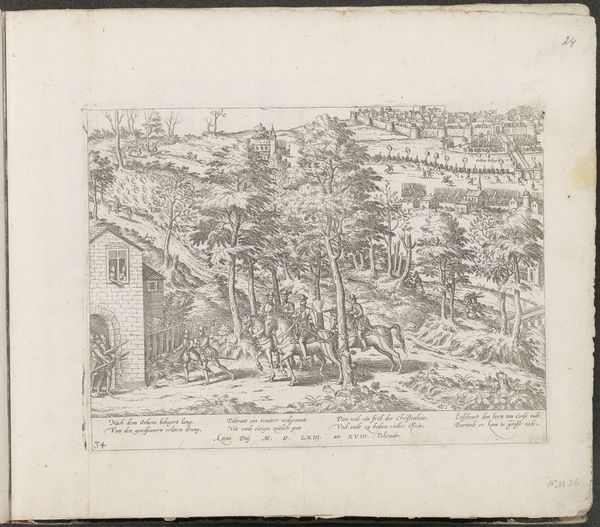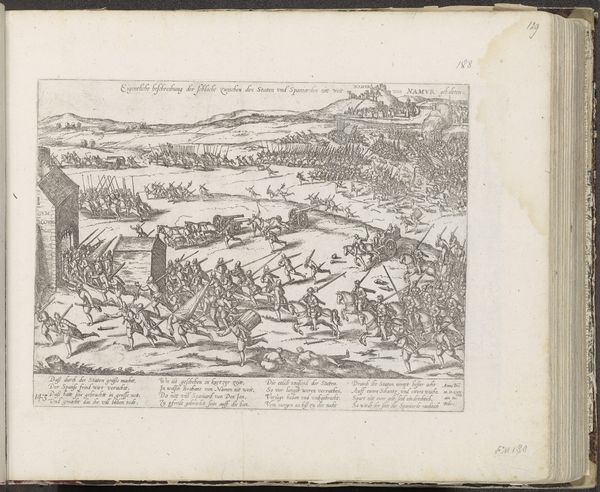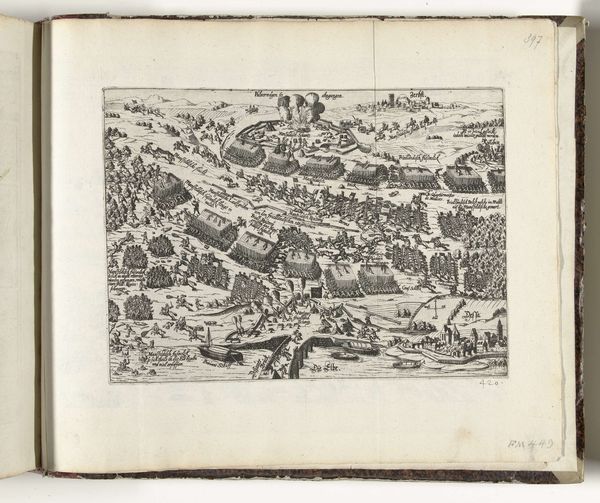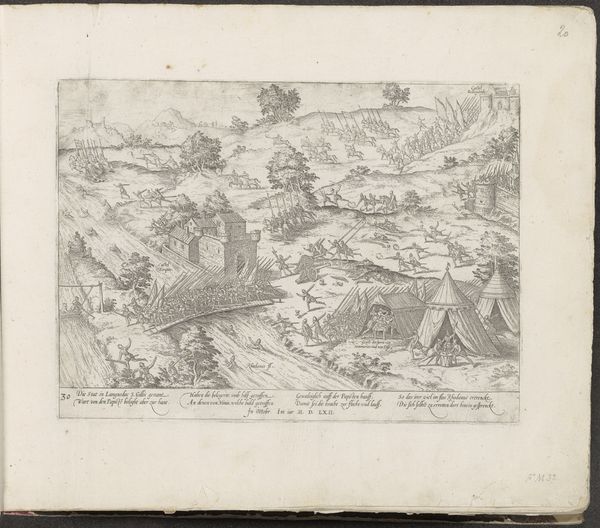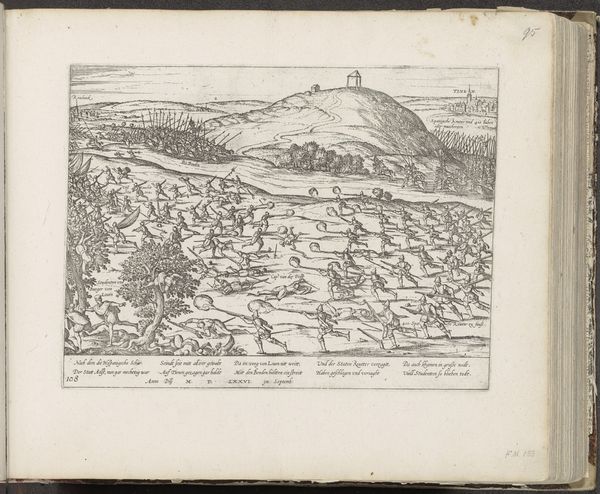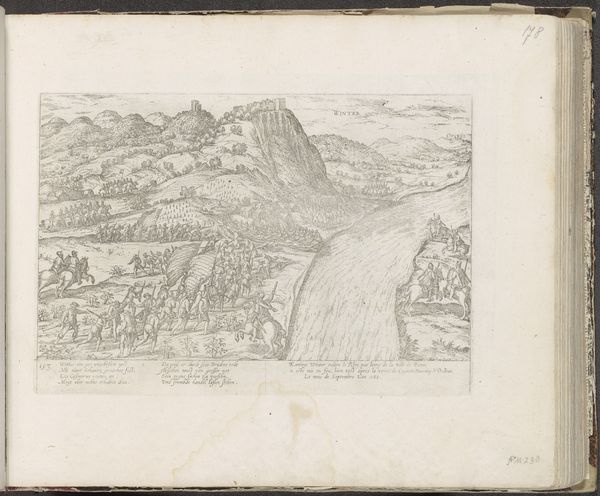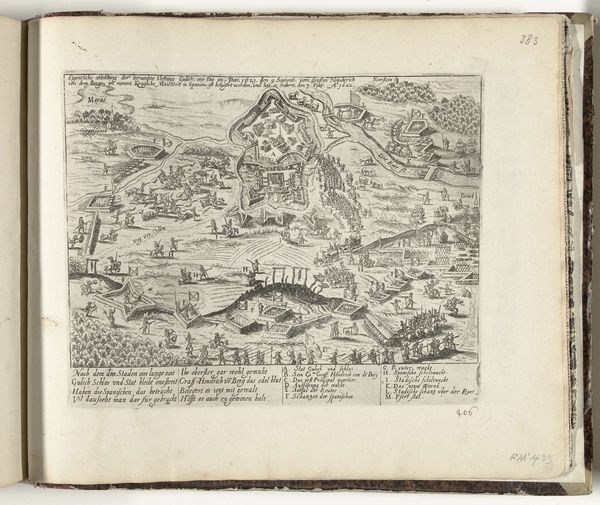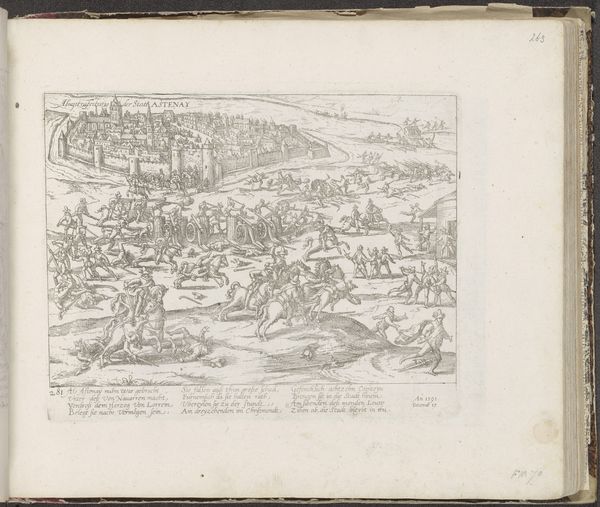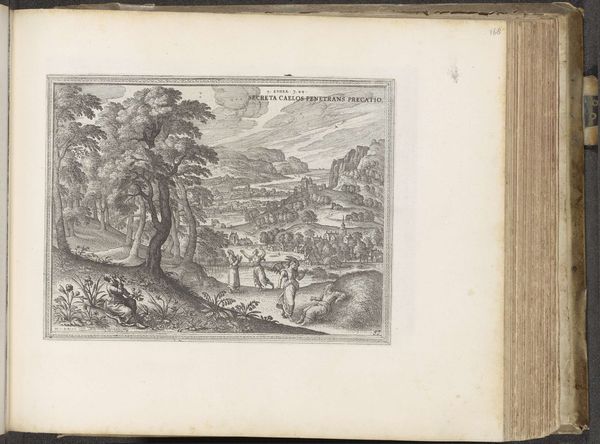
print, engraving
# print
#
landscape
#
history-painting
#
engraving
Dimensions: height 196 mm, width 281 mm
Copyright: Rijks Museum: Open Domain
Curator: This engraving, dating from around 1587-1591, is entitled "Inname en verwoesting van Godesberg, 1583" and is attributed to Frans Hogenberg. The Rijksmuseum holds it in its collection. Editor: It’s incredibly stark. All this intense activity rendered in these tight, controlled lines of engraving. It's like a bird's-eye view of a nightmare, especially that ominous plume of smoke. Curator: What strikes me is how Hogenberg meticulously depicted the processes of warfare in this historical print. Look at the movement of armies, the siege weaponry, the systematic destruction – everything reduced to the precise, repeatable labor of engraving. It brings into focus the material and human costs embedded within what we often see romanticized as "history." Editor: Yes, that smoke practically screams the collapse of more than just stone. To me, that plume rising above Godesberg resembles an uncoiling serpent. There's the Tower of Babel symbolism there, of course - a challenge to divine authority resulting in destruction. But also perhaps a more primal fear, the unpredictable violence of upheaval. Curator: It also prompts me to reflect on the economics and social structure of printmaking at the time. Hogenberg was part of a network of artisans and entrepreneurs catering to a market hungry for images documenting current events and, through its lines, this becomes almost an early form of mass media disseminating political messaging. Editor: See the figures in the lower register. Those soldiers on horseback – their determined posture speaks to the fervor, perhaps religious zeal, that fuels conflict. And observe the figures toppling from the battlements. Each element echoes larger themes of power, faith, and ultimate futility. Curator: Precisely, these works served a specific function – documenting, justifying, even glorifying violence. But if you think of them less as windows into the past, and more like artifacts that emerge from particular networks of labour and production, we get to explore how conflicts like this also shaped society on a material level. Editor: Thank you for that material insight into an image saturated with potent symbolism. Curator: And thank you, it helped put the production process within its proper historical context.
Comments
No comments
Be the first to comment and join the conversation on the ultimate creative platform.
